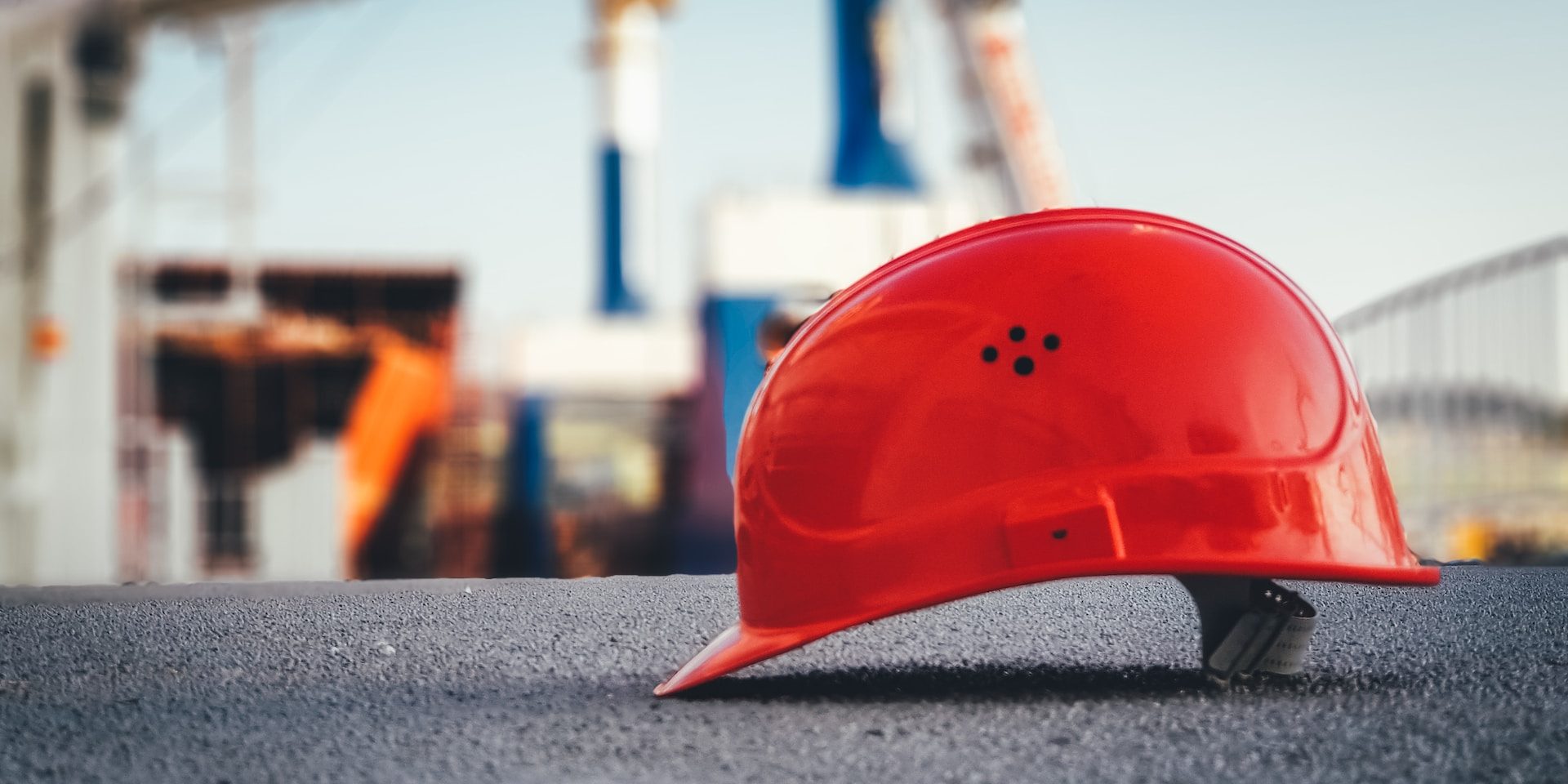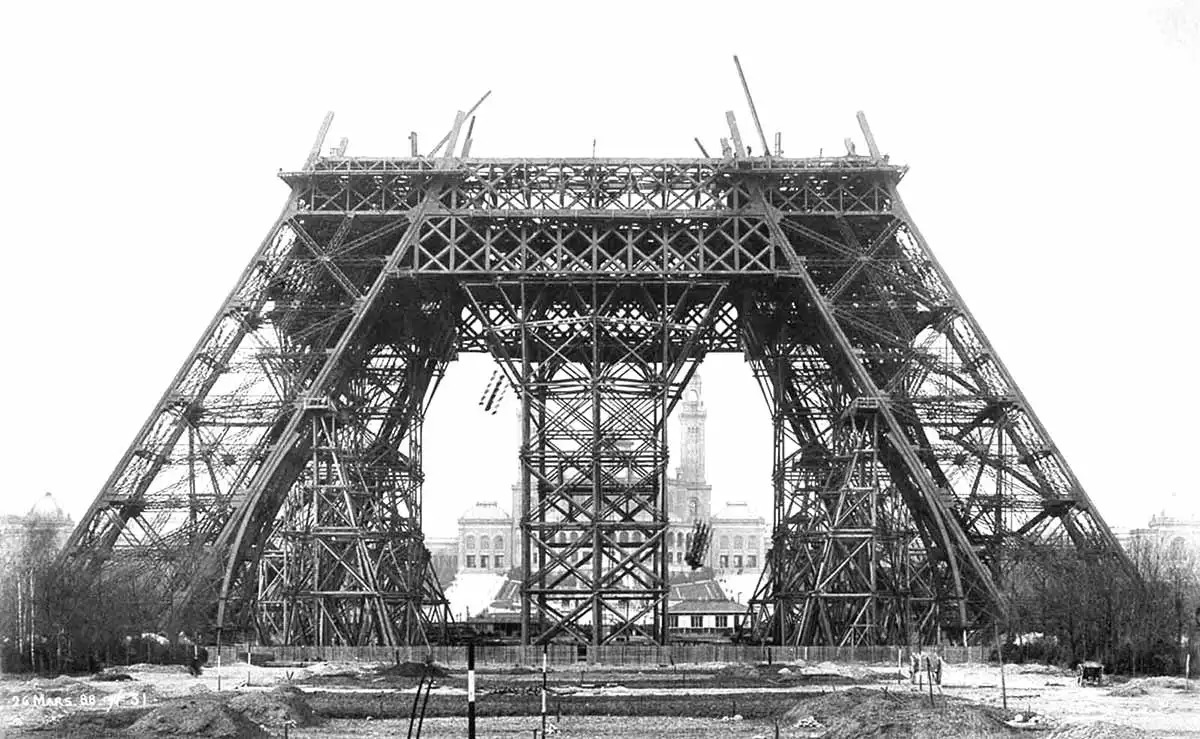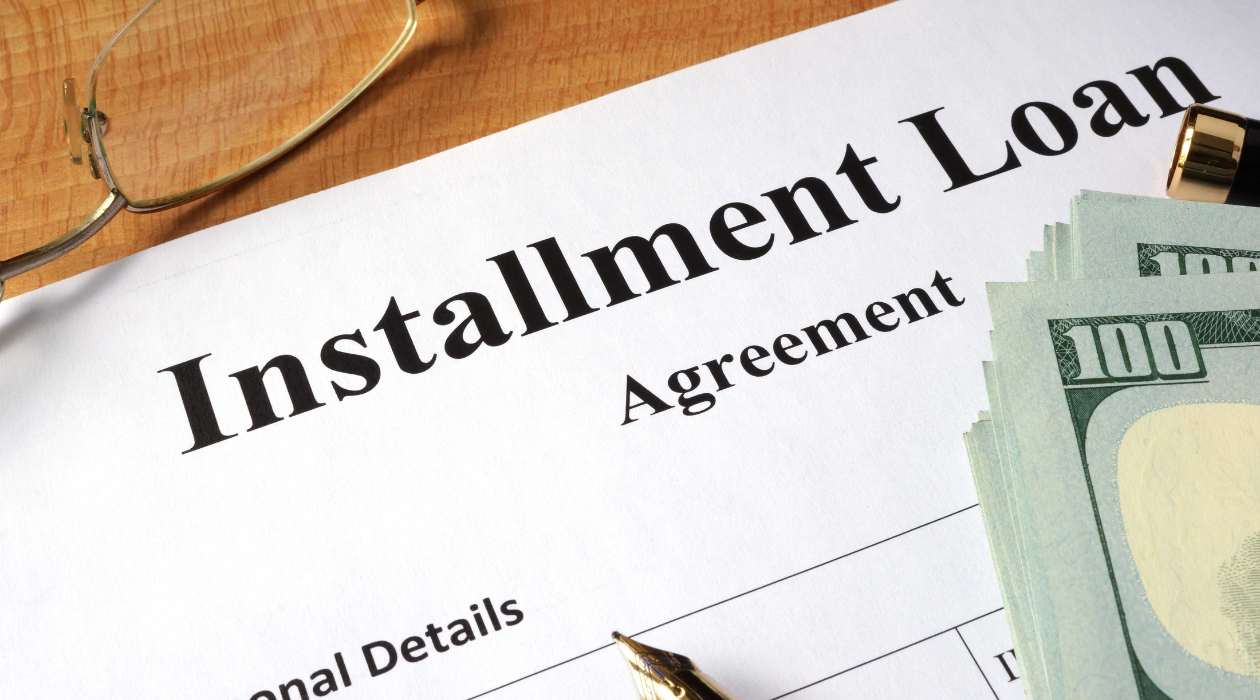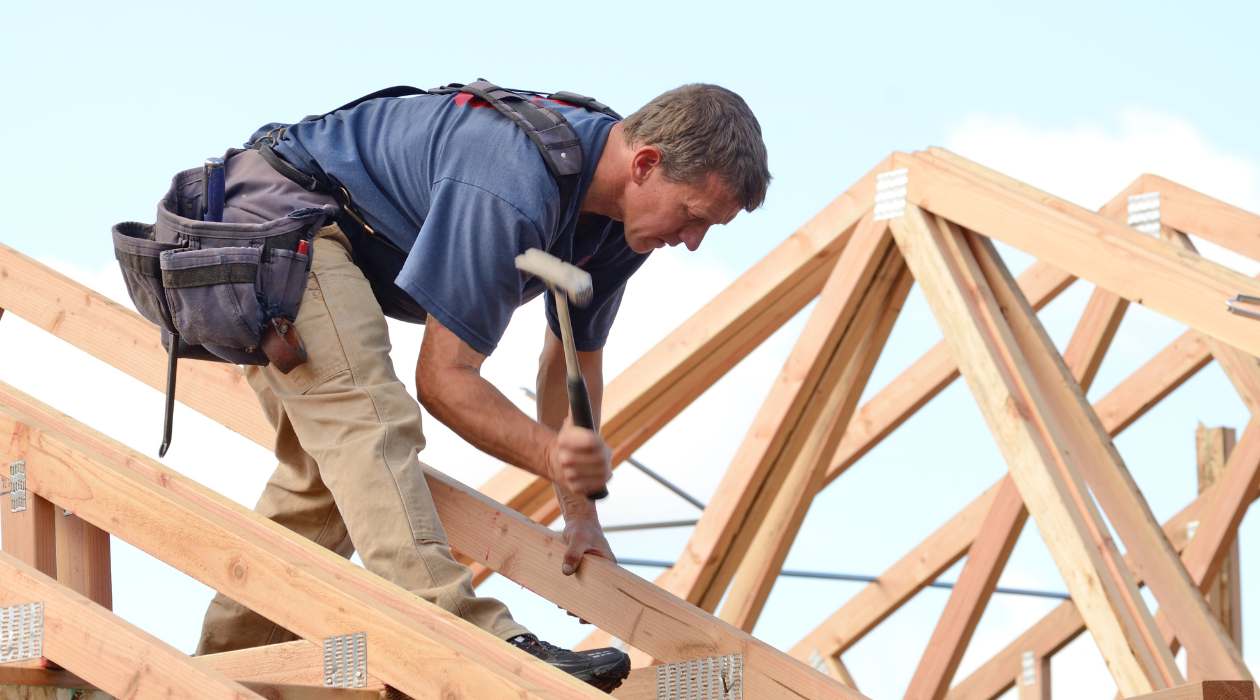Home>diy>Building & Construction>When Can You Start Construction


Building & Construction
When Can You Start Construction
Modified: December 7, 2023
Find out when you can kickstart your building construction project. Get expert advice and timelines from our experienced team. Don't wait, start your dream project now!
(Many of the links in this article redirect to a specific reviewed product. Your purchase of these products through affiliate links helps to generate commission for Storables.com, at no extra cost. Learn more)
Introduction
Welcome to the world of construction! Starting construction on a new project is an exciting endeavor that requires careful planning and preparation. Whether you’re embarking on a residential, commercial, or industrial construction project, one of the first questions that comes to mind is, “When can you start construction?”
The answer to that question relies on a variety of factors, including project timelines, permits and approvals, site preparation, and mobilizing the necessary resources. In this article, we will explore these factors in detail and provide valuable insights into the process of starting construction.
Before we dive into the specifics, it’s important to note that the construction start date may vary depending on the complexity and scope of the project. It is crucial to work closely with your construction team and keep in mind that unexpected delays or challenges may arise along the way. Nevertheless, understanding the key factors that influence the construction start date will help you navigate the process more efficiently.
So, let’s explore the project timeline, permits and approvals, site preparation, and mobilization in order to gain a comprehensive understanding of when construction can begin.
Key Takeaways:
- Construction start dates are influenced by project timelines, permits, weather, materials, site conditions, and contractual obligations. Understanding these factors is crucial for efficient construction planning and execution.
- Proper site preparation, obtaining necessary permits, mobilizing the construction crew and equipment, and commencing construction activities are essential steps for a successful start to any construction project.
Read more: What Time Can You Start Construction
Understanding the Project Timeline
When it comes to starting construction, having a clear understanding of the project timeline is essential. The project timeline outlines the sequence of activities and the estimated duration for each phase of the construction process.
The timeline begins with the initial planning and design phase, where the project team collaborates with architects and engineers to create detailed plans and blueprints. This phase typically involves gathering information, conducting feasibility studies, and obtaining necessary legal and environmental clearances.
Once the design phase is completed, the next step is to secure financing and hire a construction team. The construction team will review the plans, assess the scope of work, and provide an estimated timeline for completion.
Depending on the project’s size and complexity, the construction timeline can range from a few weeks to several months or even years. It is important to keep in mind that unexpected delays or changes in scope may extend the construction timeline.
During the project timeline, there are various milestones and checkpoints. These may include obtaining necessary permits and approvals, completing site preparation, mobilizing the construction crew and equipment, and commencing construction activities.
By understanding the project timeline, you can better plan and coordinate the various elements of the construction process. This will help ensure a smooth and efficient start to your construction project.
Factors Affecting Construction Start Date
While the project timeline provides a general framework for starting construction, there are several factors that can impact the actual start date. These factors are important to consider and may require additional time and coordination.
1. Permitting and Approvals: One of the primary factors affecting the construction start date is obtaining the necessary permits and approvals. This process can vary depending on the location and the nature of the project. It involves submitting applications, conducting inspections, and addressing any compliance issues. Delays in the permitting process can push back the start date significantly.
2. Weather Conditions: Construction can be weather-dependent, especially for outdoor projects. Extreme weather conditions such as heavy rain, snowstorms, or high winds can delay construction activities and ultimately impact the start date. It’s important to consider the climate and seasonal variations when planning your construction timeline.
3. Availability of Materials: The availability of construction materials can affect the start date. Certain materials may need to be ordered in advance, and delays in procurement or shortages in the supply chain can delay construction. It’s essential to work closely with suppliers to ensure timely delivery of materials.
4. Site Conditions: The condition of the construction site plays a crucial role in determining the start date. If the site requires extensive preparation, such as clearing, grading, or remediation work, it may take additional time before construction can begin. Unforeseen site conditions like rock formations or underground utilities may also impact the start date.
5. Contractual Obligations: Construction projects often involve multiple parties, including contractors, subcontractors, and suppliers. The start date may be influenced by contractual agreements and obligations, such as the completion of previous projects or the availability of specific resources. Clear communication and coordination among all parties are essential to align the start date with contractual obligations.
By considering these factors and incorporating them into your construction planning, you can mitigate potential delays and ensure a more accurate estimation of the construction start date.
Obtaining Necessary Permits and Approvals
Before construction can begin, it is essential to obtain the necessary permits and approvals from relevant authorities. This process ensures compliance with local regulations, zoning laws, and building codes. Here are the key steps involved in obtaining permits and approvals:
1. Research: Start by researching the specific permits and approvals required for your construction project. This may include building permits, environmental clearances, zoning permits, and others. Understand the specific requirements and any associated fees.
2. Application Submission: Once you have identified the necessary permits, fill out the required application forms accurately and completely. Prepare any additional documents or plans required, such as architectural drawings, site plans, and environmental impact assessments. Submit the application to the relevant authorities, such as the local building department or planning board.
3. Review and Evaluation: After submitting the application, the authorities will review it for compliance with the applicable laws and regulations. This may involve checking the plans for structural integrity, ensuring proper drainage, and assessing the environmental impact. The review process can take several weeks or even months, depending on the complexity of the project.
4. Inspections: Once the application is approved, the authorities may conduct inspections at various stages of the construction process. These inspections ensure that the construction adheres to the approved plans and meets the required standards. Inspections are typically conducted before pouring foundations, framing, electrical and plumbing installation, and final occupancy.
5. Permit Issuance: After the necessary inspections, the authorities will issue the permits and approvals. These documents grant you permission to start construction and indicate the specific conditions or restrictions related to the project. Make sure to keep copies of the permits on-site and readily available for inspections during the construction process.
It is crucial to note that the permit and approval process can vary depending on the location and the type of construction project. It is advisable to engage with professionals such as architects, engineers, and construction consultants who are experienced in navigating the permitting process. They can guide you through the requirements, assist with the application, and ensure compliance with all regulations.
Obtaining the necessary permits and approvals may take time, so it is important to factor this into your project timeline. Starting construction without the required permits can result in legal consequences, fines, and project delays. By following the proper procedures and obtaining the necessary permits, you can ensure a smooth and compliant start to your construction project.
It is important to consider the weather conditions and any necessary permits before starting construction. Additionally, make sure all necessary materials and equipment are readily available.
Preparing the Construction Site
Preparing the construction site is a critical step in the process of starting construction. Proper site preparation sets the foundation for a successful construction project. Here are key considerations when preparing the construction site:
1. Site Clearance: Clearing the site involves removing any existing structures, vegetation, debris, or obstacles that may hinder the construction process. This can include demolishing existing buildings, clearing trees and shrubs, and excavating the area to create a clean slate for construction.
2. Utility Connections: Ensure that the site has access to essential utilities, including water, electricity, and sewage systems. This may involve coordinating with utility companies to establish connections or reroute existing services to accommodate the construction project.
3. Site Grading and Leveling: Grading and leveling the site is crucial to create an even and stable foundation for construction. This process involves reshaping the terrain, removing excess soil, and leveling the surface to meet the design specifications and facilitate proper drainage.
4. Temporary Construction Facilities: Setting up temporary facilities is necessary to support the construction activities. This can include erecting temporary offices, storage facilities, fencing, and sanitation facilities such as portable toilets. Adequate space should be allocated for staging areas, material storage, and equipment parking.
5. Erosion and Sediment Control: Implement measures to prevent erosion and manage sediment runoff during construction. This may involve installing erosion control barriers, silt fences, and sediment basins to protect surrounding areas, water bodies, and minimize environmental impact.
6. Safety and Security: Prioritize safety measures to protect workers, visitors, and the public. This includes establishing proper signage, safety barriers, and implementing safety protocols. Secure the site to prevent unauthorized access and protect against theft or vandalism.
It is essential to engage professionals such as surveyors, geotechnical engineers, and environmental consultants to assist with site preparation. They can provide expertise in evaluating the site conditions, analyzing soil stability, and ensuring compliance with environmental regulations.
Remember to incorporate site preparation into your project timeline and factor in the time required to complete these activities. Proper site preparation not only ensures a smooth start to construction but also enhances safety, efficiency, and the long-term success of your project.
Mobilizing Construction Crew and Equipment
Mobilizing the construction crew and equipment is a crucial step in the construction process. It involves gathering the necessary workforce and resources to initiate construction activities. Here are the key aspects to consider when mobilizing for construction:
1. Human Resources: Start by assembling a skilled and experienced construction crew. This includes hiring project managers, supervisors, tradespeople, and laborers. The size and composition of the crew will depend on the scope of the project. Ensure that the crew members have the necessary qualifications, certifications, and licenses required for their respective roles.
2. Equipment: Identify the specific equipment and machinery required for the construction activities. This can include excavation equipment, cranes, concrete mixers, scaffolding, and more. Determine whether the equipment will be purchased, leased, or subcontracted. Ensure that all equipment is inspected, maintained, and serviced properly before use.
3. Logistics and Transportation: Plan for the logistics of transporting the construction crew, materials, and equipment to the site. This may involve arranging for transportation vehicles, coordinating with suppliers for material deliveries, and determining the most efficient routes for transporting equipment.
4. Safety and Training: Prioritize safety by providing comprehensive training to the construction crew. Ensure that they are well-versed in safety protocols, emergency procedures, and the proper use of equipment. Regular safety meetings and inspections are essential to maintain a safe working environment throughout the construction process.
5. Site Organization: Establish an organized site layout that allows for efficient workflow and minimizes disruptions. Allocate space for material storage, equipment staging, and working areas. Clearly mark designated paths and areas to enhance safety and prevent accidents.
6. Communication and Coordination: Effective communication and coordination among the construction crew, project managers, and subcontractors are vital for a smooth start to construction. Regular meetings, progress reporting, and clear communication channels will ensure that everyone is on the same page and working towards the same goal.
It is important to consider the availability and lead time required for mobilizing the construction crew and equipment. This is why it is crucial to plan ahead and coordinate with suppliers, subcontractors, and the construction team.
By efficiently mobilizing the construction crew and equipment, you can ensure a seamless transition from site preparation to the commencement of construction activities. This sets the stage for a productive and successful construction project.
Commencing Construction Activities
Commencing construction activities marks an exciting milestone in the project timeline. It signifies the start of turning plans and preparations into tangible structures. Here are key steps involved in commencing construction:
1. Construction Kick-Off Meeting: Start by conducting a kick-off meeting with the construction crew, project managers, and key stakeholders. This meeting serves to review the project scope, objectives, and timelines. It also provides an opportunity to clarify any questions, address concerns, and ensure everyone is aligned with the project goals.
2. Site Mobilization: Once the kick-off meeting is completed, the construction crew and equipment can be mobilized to the site. Establish a site office and organize the workspace to promote efficiency and safety. Ensure that all necessary permits and approvals are prominently displayed, and safety protocols are strictly followed.
3. Foundation Construction: The construction process typically begins with the construction of the foundation. This can involve excavation, pouring concrete footings or piers, and building the foundation walls. It is essential to closely follow the architectural and engineering plans to ensure a solid and stable foundation for the structure.
4. Building Framework: After the foundation is completed, the construction crew can start erecting the structure’s framework. This may involve assembling steel or wood framing, installing support beams, and constructing walls, floors, and roofs. It’s crucial to adhere to the design specifications and building codes during this phase.
5. Mechanical, Electrical, and Plumbing (MEP) Installations: As the framework takes shape, the MEP systems can be installed. This includes electrical wiring, plumbing lines, HVAC systems, and other mechanical components. Coordinating with specialized subcontractors is essential to ensure proper installation and integration of these systems.
6. Interior and Exterior Finishes: Once the structure is in place, attention can be turned to the interior and exterior finishes. This involves installing insulation, drywall, flooring, windows, doors, and exterior cladding. Finishing touches such as painting, landscaping, and signage can also be undertaken during this phase.
7. Quality Control and Inspections: Regular quality control checks and inspections are essential throughout the construction process. This ensures that the work meets the required standards and specifications. Inspections may be carried out by local building authorities, third-party inspectors, or internal quality control teams.
8. Progress Monitoring and Reporting: Throughout the construction process, it is important to monitor the progress and report on key milestones. This helps track the project’s status, identifies any issues or delays, and allows for timely adjustments. Regular progress meetings with the construction team and stakeholders can facilitate effective communication and decision-making.
By carefully executing these steps, construction activities can progress smoothly and efficiently, bringing your project to life. Keep in mind that effective project management, clear communication, and a strong focus on quality are essential for successful construction.
Conclusion
Starting construction on a new project is an exhilarating journey that requires careful planning, coordination, and preparation. Understanding the project timeline, factors that affect the construction start date, obtaining the necessary permits and approvals, preparing the construction site, and mobilizing the construction crew and equipment are crucial steps in ensuring a successful start to construction.
By adhering to the project timeline, you can accurately gauge when construction activities can begin. Factors such as permits and approvals, weather conditions, availability of materials, site conditions, and contractual obligations play a significant role in determining the construction start date. Taking these factors into account allows for a more realistic and efficient construction timeline.
Obtaining the necessary permits and approvals is a vital step in the construction process to ensure compliance with legal and regulatory requirements. Proper site preparation, including site clearance, utility connections, site grading, and erosion control, sets the foundation for a smooth construction process.
Mobilizing the construction crew and equipment involves assembling a skilled workforce, procuring necessary equipment, planning logistics, ensuring safety, and facilitating effective communication and coordination among the team members.
Finally, commencing construction activities marks the transition from planning to action. Through the construction kick-off meeting, site mobilization, foundation construction, building framework, MEP installations, interior and exterior finishes, quality control, and regular progress monitoring and reporting, the construction project takes shape.
In conclusion, starting construction requires careful attention to detail, diligent planning, and effective execution. By understanding the various elements involved and incorporating them into your project management approach, you can ensure a successful and efficient start to construction. Remember, it’s not just about getting started; it’s about laying the groundwork for a project that will stand the test of time.
Frequently Asked Questions about When Can You Start Construction
Was this page helpful?
At Storables.com, we guarantee accurate and reliable information. Our content, validated by Expert Board Contributors, is crafted following stringent Editorial Policies. We're committed to providing you with well-researched, expert-backed insights for all your informational needs.















0 thoughts on “When Can You Start Construction”